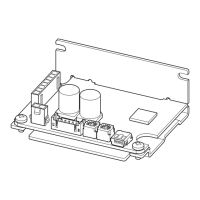25
Connection
EXT-ERROR input
The EXT-ERROR input is a signal for emergency stop. (Factory setting ON)
When this signal is turned OFF, an alarm is generated to stop the motor instantaneously.
Note
When the TL input, HMI input, and EXT-ERROR input are not assigned to input terminals, they are always set to ON.
And if a single input is assigned to multiple input terminals, the function will be performed when all of the terminals
are turned ON.
H-FREE input
This is the input signal that can be used when the load holding function is enabled.
If the H-FREE input is turned ON when the stopped motor shaft is electrically held by the load holding function, the
motor shaft can be rotated by an external force (free-run state).
6.11.3 Description of input signals
SPEED-OUT output
30 pulses are output while the motor output shaft makes one revolution in synchronization with the motor rotation.
The pulse width of output pulse signals is 0.2 ms. The motor rotation speed can be calculated using the SPEED-OUT
output.
Rotation speed (r/min) =×
60
Frequency of SPEED-OUT
equency of SPEED-OUT (Hz) =
T
ALM-A output, ALM-B output
If the driver protective function is activated, an alarm will be generated. If an alarm is generated, the ALM-A output is
turned ON (in the case of normally open), or the ALM-B output is turned OFF (in the case of normally closed). At the
same time, the motor stops, and the PWR/ALM LED blinks in red.
If an alarm is generated while the motor rotates, the motor will coast to a stop. (Instantaneous stop at the time of
external stop)
or movement
ON
CW
Stop
ON
OFF
Alarm generation
TLC output
When the motor output torque is limited, the TLC output is turned ON.
Note
If the torque limiting value is set to less than 20%, the TLC output may not be stable.
Load torque
TLC output
Torque limiting value (%)
ON

